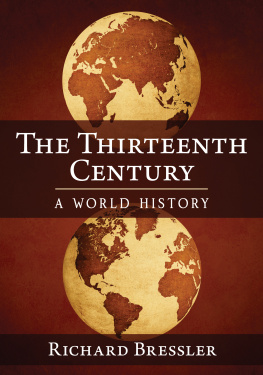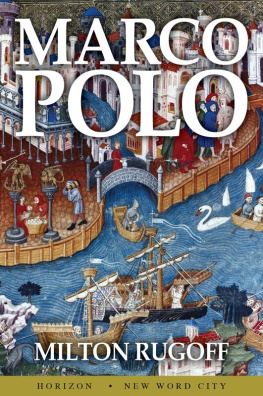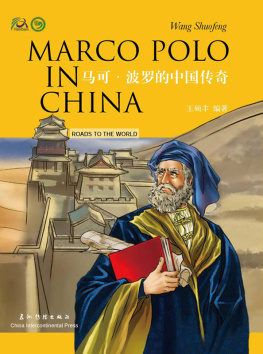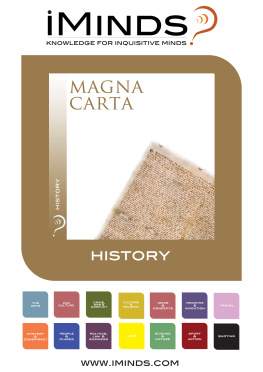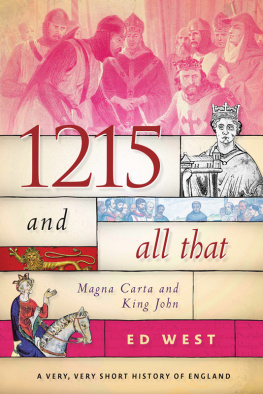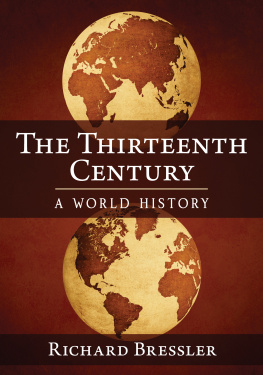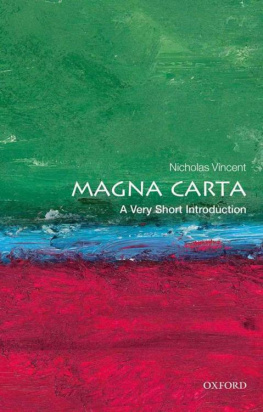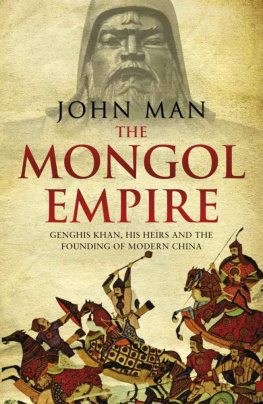
THE THIRTEENTH CENTURY
A World History
Richard Bressler

McFarland & Company, Inc., Publishers
Jefferson, North Carolina
Also by Richard Bressler: The Cubs and the As of 1910: One Dynasty Ends, Another Begins (McFarland, 2016)
LIBRARY OF CONGRESS CATALOGUING DATA ARE AVAILABLE
BRITISH LIBRARY CATALOGUING DATA ARE AVAILABLE
e-ISBN:978-1-4766-3323-7
2018 Richard Bressler. All rights reserved
No part of this book may be reproduced or transmitted in any form or by any means, electronic or mechanical, including photocopying or recording, or by any information storage and retrieval system, without permission in writing from the publisher.
Front cover images 2018 Trifonov_Evgeniy/iStock
McFarland & Company, Inc., Publishers
Box 611, Jefferson, North Carolina 28640
www.mcfarlandpub.com
Acknowledgments
This book arose from my prior book on Frederick II, Emperor of the Holy Roman Empire and King of Sicily. Thanks to Westholme Publishing and its owner, Bruce Franklin, for publishing that book, and initially encouraging this one. Thanks to my friends Burks Oakley and Mike Kulas, for aiding a technologically challenged person through a project that requires more computer knowledge than I have. Thanks to the three libraries in my hometown of Champaign, Illinoisthe University of Illinois Library, Champaign Public Library, and Urbana Free Library. Thanks to Dr. Timothy Pauketat of the University of Illinois, for answering several questions about Cahokia. Thanks to the staff at the Illinois State Park in Cahokia for their assistance. Thanks to everyone at McFarland for their help and encouragement.
Preface
Two books in my library were the inspiration for the format and reach of this book. The first is The First Century: Emperors, Gods, andEveryman by William K. Klingaman (New York, 1990). This book covers the history of the 1st century ce, and uses particular years and events that took place that year in a particular place as the structure for the story. The subtitle of Emperors, Gods, and Everyman shows that the emphasis was on people whose names have come down to us, like Augustus, Tiberius, Nero, Jesus, St. Paul. The geographic reach of this book went beyond the Mediterranean, including Germany, Britain, China and Vietnam. The two main topics were the Roman and Chinese Empires. While Everyman was included in the subtitle, the vast majority of the people discussed in this book were political, military or religious leaders. The second book that inspired me was The Birth of the Modern: World Society 18151830 by Paul Johnson (New York, 1991). This book covered the years stated in the title, but covered the whole world. Society is discussed in many aspects, not just the leaders. I decided to try and combine these two approaches. I wanted to learn about the whole world in the 13th century, not just limited to Europe and China. But I was more interested in political, military and religious personalities. So I decided to follow the format of The First Century, but include as much of the world as I could.
Writing history of the parts of the world without written records is not really writing history. The sources used are archaeological, not historical. These archaeological chapters cover two large parts of the world peopled by civilizations that did not leave written records for the 13th century: the Americas and sub-Saharan Africa. I chose not to include anything about Oceania, Australia and New Zealand. Choices were made based on my reading of history for the rest of the world. There were other events and people whom I could have included, but the exclusions are mine.
The first thing one learns when studying the world in the 13th century is the overwhelming importance of one long event, the Mongol conquest. As will be detailed, in 1200 the Mongol realm was confined to a remote part of the vast grasslands in East Asia. By 1300, Mongol rule was in place from Moscow to Korea, Turkey to the Pacific coast of China, southern Siberia to northern parts of Indo-China. This was the largest empire yet seen in world history. It remains the largest contiguous land empire, only being surpassed in total size by the British Empire at its height. This empire was not created in a peaceful manner. A recent book, The Better Angels of Our Nature argues how much more violent the past was than our own time. One of the examples cited is a list of events called Possibly the Twenty Worst Things People Have Done to Each Other. This takes the best estimate of the number of people who died in an event (not including epidemics, which killed many more people than these human-caused events), which could take place over a number of centuries, like the Atlantic or Mideastern slave trade, and determined the percentage of world population that was involved. The estimate for the death toll in the 13th century from the Mongol conquest is 40 million. When this is compared to world population, the 20th century equivalent is 278 million. This makes the Mongol conquest the second costliest event in world history, based on percentage of world population. (The costliest event was the An Lushan Revolt in 8th century China, which caused a 20th century equivalent of 429 million deaths. I had never heard of it.) That is why there are more chapters on the Mongol conquest than any thing else.
Other basic facts need to be understood about the 13th century. Living conditions anywhere in the world were much different than today. I am assuming any reader understands that, and will make little mention of the slowness of communication and difficulty of everyday life. Life spans were much shorter. Most of the people mentioned in this book were leaders of some kind, who had much better material conditions and much better chance of a long life than the people they led. Even these leaders suffered the loss of many children and relatives at very young ages. Religious belief, and practice, was universal. Which religion was practiced varied from place to place, but very few people were not religious. Technology was primitive by our standards, and not widespread. The leading technological area was China. Education was confined to a small upper class. Literacy was very limited. Progress in these areas was being made, but the standard of living, even among the richest, was well lower than we are used to. A middle class of merchants and artisans was in its infancy, but making enough of an impact that I discuss trade in several chapters. The occupation of the vast majority of the population was to secure, through agriculture or other means, the sustenance of life. I will not be reviewing this struggle, which was the daily fact of life for approximately 95 percent of the population of the world. I can recommend one book, The Axe and the Oath, which details the struggle for everyday existence in northern France in the 13th century. Im sure there are many others for different parts of the world.
At the level of rulers, throughout this book I will be using modern terms. When I use the word state, empire, or province, please do not use modern conditions as your base point. Modern civil service and administration did not exist. Civil servants existed, particularly in China. But they were paid very poorly by the government, and had to secure income by corrupt means. In 13th century kingdoms and empires, most government below the level of the king and emperor was conducted by local nobles in rural areas and prominent nobles and merchants in towns. These subordinates were not in constant communication with their capitals, and tried to become as independent as possible. There are more instances than I can count of rebellions, revolts, or civil wars initiated by subordinates in these larger political entities. A ruler in the 13th century, in any part of the world, could not be sure of obedience away from his own presence. All rulers tried to ensure this obedience, with varying levels of success. Genghis Khan was probably the most successful in this century, and he had major problems. Rulers all over the world shared one characteristic, with very few exceptions. They wanted to expand their realms. The Mongols are the most extreme example of this during the 13th century, but they were not alone. Virtually all of the larger polities discussed in this book wished to expand, and much of what is discussed in this book are the results of the conflicts caused by this wish.
Next page
